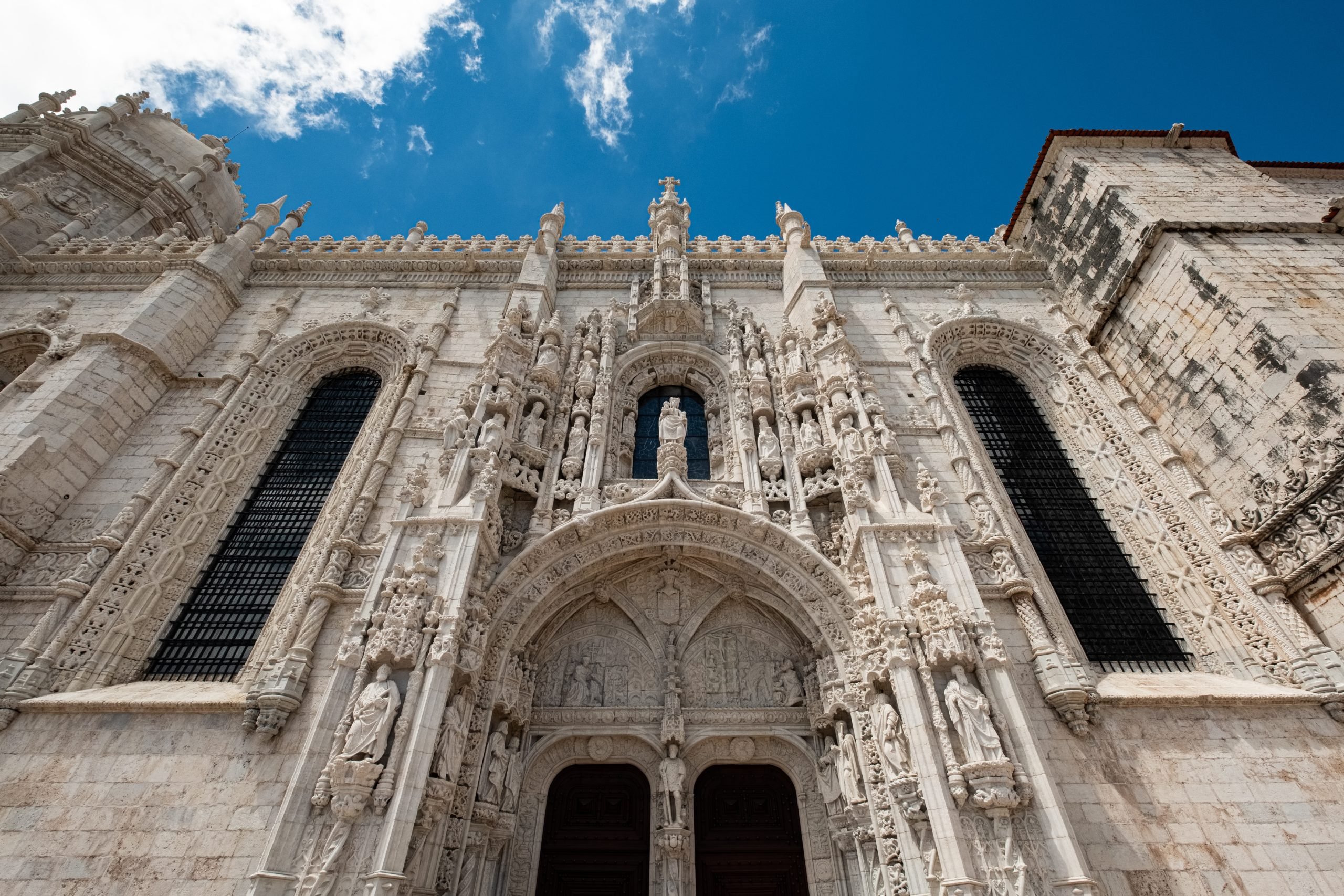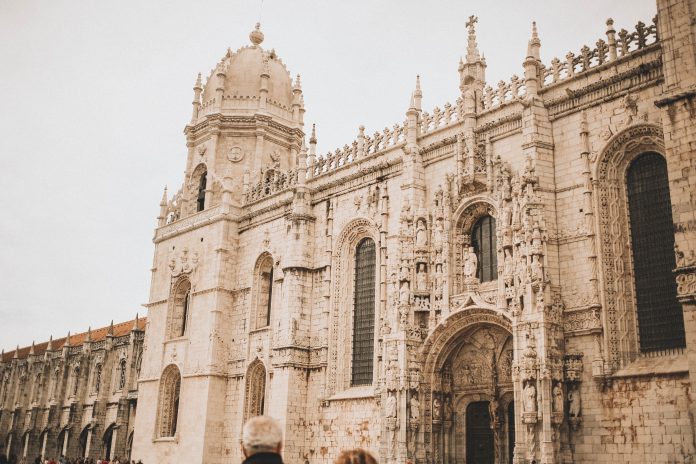Mosteiro dos Jerónimos is a former monastery that is a UNESCO World Heritage Site, constructed in the Portuguese Late Gothic Manueline style in Belem, Lisbon.
With its imposing towers and intricate details, the Jerónimos Monastery is a striking view for those passing through Belem, the place where Portuguese ships departed from during the discoveries.
But there’s more to this monument than just its striking architecture. Let’s take a look at the history behind the monastery, its construction, and what you can expect when visiting.
History
The Jerónimos Monastery was built to honor the Portuguese discoveries and the country’s global expansion in the 15th and 16th centuries, particularly to celebrate the return of Vasco da Gama from his sea voyage to India.
The construction of the monastery began in 1501 and took over a century to complete. King Manuel I commissioned the building, and it was funded by the taxes raised on spices, jewels, and other goods imported into Portugal from Asia, Africa, and Brazil through the Portuguese discoveries.
The monastery was built to honor Saint Jerome, who was the patron saint of scholars and navigators. The monks who lived in the monastery were responsible for praying for the king and the country’s success in their exploration and colonization of the world. These monks did so for over four centuries until 1833 when the religious orders were dissolved.
Fun fact – these were the monks that created the original recipe for the Portuguese Custard Tart, pastries that are now sold to the public at the nearby Pasteis de Belem.
Inside the monastery, you’ll also find Vasco da Gama’s final resting place, adding to the site’s significance. King Manuel I and his wife, Luis de Camōes, and others also rest here.
Architecture
The Jerónimos Monastery is one of the best examples of the Portuguese Late Gothic Manueline style. This architectural style blends Gothic, Renaissance, and Moorish architectural elements to create a unique look.
The intricate details, the maritime motifs, and the sculptural decorations on the exterior of the monastery represent the country’s connection to the sea, navigation, and discoveries.
The interior of the monastery is equally stunning, with a grand hall, cloisters, and the church of Santa Maria. The church is a masterpiece of Manueline architecture, with its vaulted ceiling, stained glass windows, and the tombs of historical figures.
In the 19th century, the National Archaeological Museum and the Maritime Museum were established in the west wing of the monastery.

Visiting Times & Tickets
The Jerónimos Monastery is open from 9:30 am to 6 pm. The last ticket sales time is at 5 pm. The monastery is closed for visitors on Monday and January 1st, Easter Sunday, May 1st and December 25th.
A standard ticket costs 10 euros. However, there are a few discounts available:
- Visitors aged 65 or older – 50%
- Student’s card – 50%
- Youth Card – 50%
- Family ticket (1/2 adults +2 children under 18) – 50%
If you are a resident in Portugal, you can enjoy free entrance into all National Museums and Monuments on Sundays and holidays until 2 pm, which includes the Jerónimos Monastery.
We recommend visiting the monastery in the morning to avoid the crowds, and you should plan to spend at least two hours exploring the site. Guided tours are available in multiple languages, allowing you to learn all about the history and architecture of the monastery.
Related Tours
Belém and Jerónimos Monastery Guided Small Group Walking Tour
Lisbon All-in-One Hop-On Hop-Off Bus and Tram Tour with River Cruise


